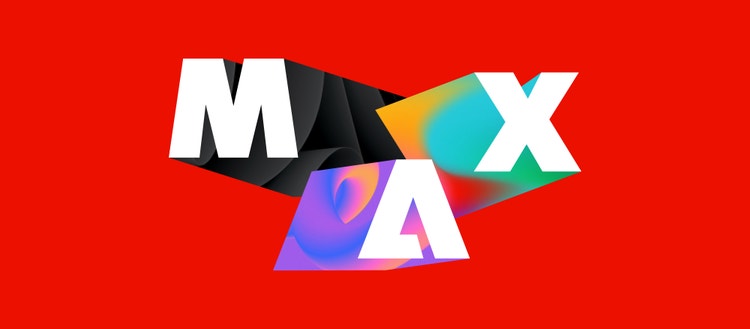Provoking thought and making meaning is the domain of the artist. And while the world speculates on how the metaverse will work, artists are already striving to make it feel. So how will new digital worlds come alive?
Despite being a new frontier for many people, the concept of ‘the metaverse’ has set the world’s tongues wagging. Media and early adopters are fuelling the hype, while consumers and brands are still figuring out how to occupy space and connect in a virtual environment.
But as the world speculates on how the metaverse will work, creatives in Asia Pacific are turning their attention to how our brave new virtual world will feel. For many, the metaverse is loaded with design potential, providing a suite of new tools and a blank canvas to explore new possibilities and push creative boundaries.
Creating worlds we want to live in
Katrina Yu is a photographer and digital artist based in The Philippines and is speaking at this year's Adobe MAX.
https://www.instagram.com/p/B8iz6wJnI8h/?hl=en
Katrina’s images show her in different worlds, interacting with everything from mermaids to dinosaurs. They are fantastical, cinematic and capture the sense of adventure she hopes other creatives will heed when creating virtual worlds.
Katrina says she captures worlds she hopes to one day experience.
“I don’t imagine myself turning into a mermaid or anything,” she jokes, “but I am amazed at how much virtual worlds are evolving on a weekly basis. There’s always something new and it’s fascinating to observe.”
Katrina says artists have always taken creative liberties to enhance their work, and continue to do so when designing for interconnected and immersive virtual worlds.

“When you add imagination and an element of fun to your creations it makes them more interesting. I’ll often look at a classical portrait and wonder how much of it is real and how much of it is distorted reality? Did the artist adjust the colours of the background, or the colour of a subject's clothes?” she says.
Building spaces we want to spend time in
Until now, virtual worlds have existed in a somewhat nascent capacity, with the popularity of immersive games and experiences such as Minecraft and Second Life hinting at the format's potential.
The multidimensional work of artists like Jorge Valle shows we’re now at a point where we can push beyond limitations and create virtual buildings, rooms and spaces that people want to spend time in. In collaboration with Pablo Gomez, Jorge created the Adobe Virtual Gallery, using technological advances to make it as accessible as possible.

“The gallery has an asynchronous loading - which means the first thing that loads is the architecture of the gallery or space you’re working in,” Jorge explains.
“I’m always really drawn to enhancing the look of the rooms I’m creating; it's never just a blank cube, it's all about the lighting, the texture of the walls.”
According to Jorge, the future of web3, with its decentralised nature and ubiquitous connectivity, is one where the possibilities are endless.
Accessing recognition and recompense
It’s a position that rings true for Mr Misang, currently the second highest-grossing artist on NFT marketplace SuperRare.
His "Modern Life is Rubbish" collection has a total transactional value of $US1.76 million (as of May this year) — an astonishing achievement for an artist who knew nothing of NFTs at the beginning of the year.
https://www.instagram.com/p/CQyYl_hntiK/?hl=en
“My first reaction after selling one of my works as an NFT was kind of amazement,” Mr Misang says.

“I liked the feeling that the digital works I’d been creating were being recognised as “artwork,” and it was all so new to me.”
Mr Misang
Mr Misang believes the fair recognition and compensation virtual worlds offer digital artists will allow many to progress in their careers.
“Since we now have an environment in which artists can produce more work with greater focus, it will be easier for them to expand,” he said.
https://www.instagram.com/p/CP0kHfqnhjk/?hl=en
“They’ll be able to try new things that were not possible before.”
Co-existing and collaborating in a virtual world
Katrina believes the Metaverse provides ample opportunity for artists to collaborate and is excited about the cross-discipline and cultural connections it affords.

“The future of creativity is collaborative. The metaverse provides greater opportunities for 2D and 3D artists to co-exist and work together.”
Katrina Yu
“I’m always inspired by how easy it is to get to know people of different cultures and backgrounds on the internet. When you mix them together, it creates a fusion and turns into something fresh and new.”
While it’s still early days for the metaverse, it’s hard not to be excited by the idea of a blank canvas and endless possibilities.

Katrina says artistic contribution is valuable, and whatever we’re building will serve as a mirror for creative expression.
“We are a collection of our likes, or our dislikes, our experiences; so whatever we are making is a cumulation of our collective experiences,” says Katrina.
“There’s always a place for everyone. Sharpen your axe, find your space and people will appreciate it.”
Feeling inspired? Explore the full Virtual Gallery or check out our other superstar creators, the latest product news, like 3D and VR updates, at this year’s Adobe MAX.
Recommended for you

When the collaborative vibes are virtual
Concept and character designer Pablo Gomez and web designer Jorge Valle discuss collaboration as the key to the Adobe Virtual Gallery, created for Adobe MAX.
10-12-2022

How Ryan Mamba turned a smartphone obsession into a career
Learn how Singapore-based photographer and filmmaker Ryan Mamba turned his hobby of capturing experimental iPhone snaps into a full-time profession.
10-12-2022

From the sacred to the street, why Photoshop is for everyone
Self-taught Photoshop whizz Rames Harikrishnasamy and graphic artist Stavroula Adameitis discuss how creating content online fuels creativity and personal fulfilment.
10-12-2022

